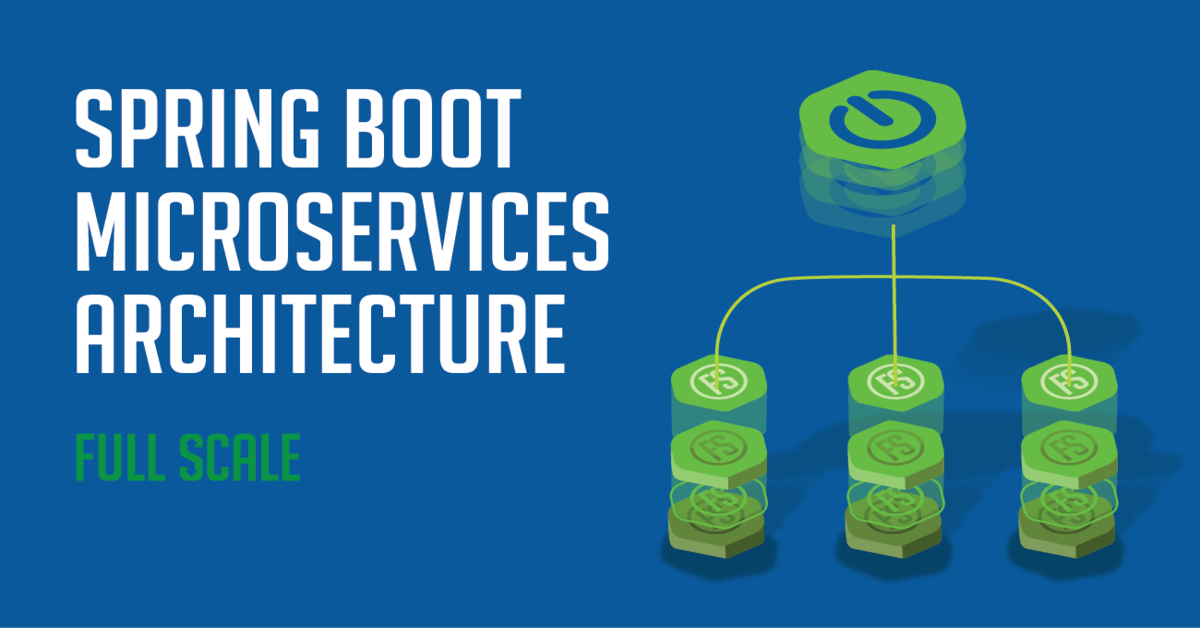
What is a microservice?
As the name suggests, microservices are basically independent software services. Which provides a certain feature or function in a software application and serves a purpose.
Each microservice is designed to perform specific functionality and works with other microservices to create an application. These services must be independently maintainable, monitorable, and deployable. Microservices speed up the application development process and make the application more flexible. Because each one is small and easy to handle. Microservices are modular projects that have a single responsibility and perform one job and only that job's work. Microservice architecture has become a popular approach today, and many large-scale applications use this architecture.
What is spring boot?
Spring Boot is a popular framework for building a standalone Spring application ready for production. It outlines the application development process and provides a set of settings that can be easily adjusted according to the needs of the project.
Spring Boot is widely used when combined with a microservices architecture to build scalable, self-contained systems. When using Spring Boot with microservices, the following important issues should be considered:
Service registration and lookup: Each microservice requires a service registration and lookup to be managed and looked up. For these purposes, many custom services such as Spring Boot, Netflix Eureka come with registration and search factors.
API Gateway: API Gateway accepts all input data and assigns them to the appropriate microservices to ensure microservices' immutability and service privacy. Spring Boot has many solutions like Spring Cloud Gateway or Netflix Zuul to provide API Gateway.
Spring Boot can work with a RESTful API to facilitate data exchange between microservices. In addition, Spring Boot provides configuration management and resource management for each microservice to run autonomously.
Another advantage of Spring Boot is its integration with many popular databases and other data storage systems. This makes it easier for the microservice to access the data sources and improves the performance of the application.
Overall, using the Microservice architecture with Spring Boot is a powerful solution that simplifies the development and management of complex applications.
Microservice architecture
Microservice architecture is a practice that allows applications to be built as a system of a number of small, independent, single-function services. These services can be developed and integrated with each other independently. This allows applications to be developed more easily, reused, developed rapidly, and provides a higher degree of device protection and fault tolerance.
A microservice architecture differs from a monolithic architecture that collects services together for a single purpose. Each microservice may use a different set of software or technologies, along with a different job.
Microservices architecture is seen as an ideal way to divide the built-in functions of an application through independent services, increase the reusability of built-in code, and make changes quickly and easily during development and use. Therefore, many companies are switching to microservices architecture and trying to take advantage of this architecture.
Basic principles of microservices architecture
Single-purpose services: Each microservice should have only one capability and should be developed independently.
REST API as communication path: It is recommended to use REST APIs to enable communication between microservices.
Service registration and discovery: The relationships between microservices must be managed and managed independently. For these purposes, a service registration and search system is required.
Scalable equality: All microservices, working together, must provide the functionality of applications. For these purposes, measured parity is one of the key principles of microservice architecture.
Join Java Backend Programming classes! Thanks to the program that aims to make you think like a real engineer, not a "coder", you will become a "Java Backend developer" thanks to the extensive hours devoted to each new topic and experienced trainers.
Classes at the academy are taught using the "1+1" model.
📚Educational process is covered both theoretically and practically. Thus, students can practice the information they learn.
🎯 The implementation of classes by two different senior specialists doubles the effectiveness of teaching.
Change your future with ATL Academy!
